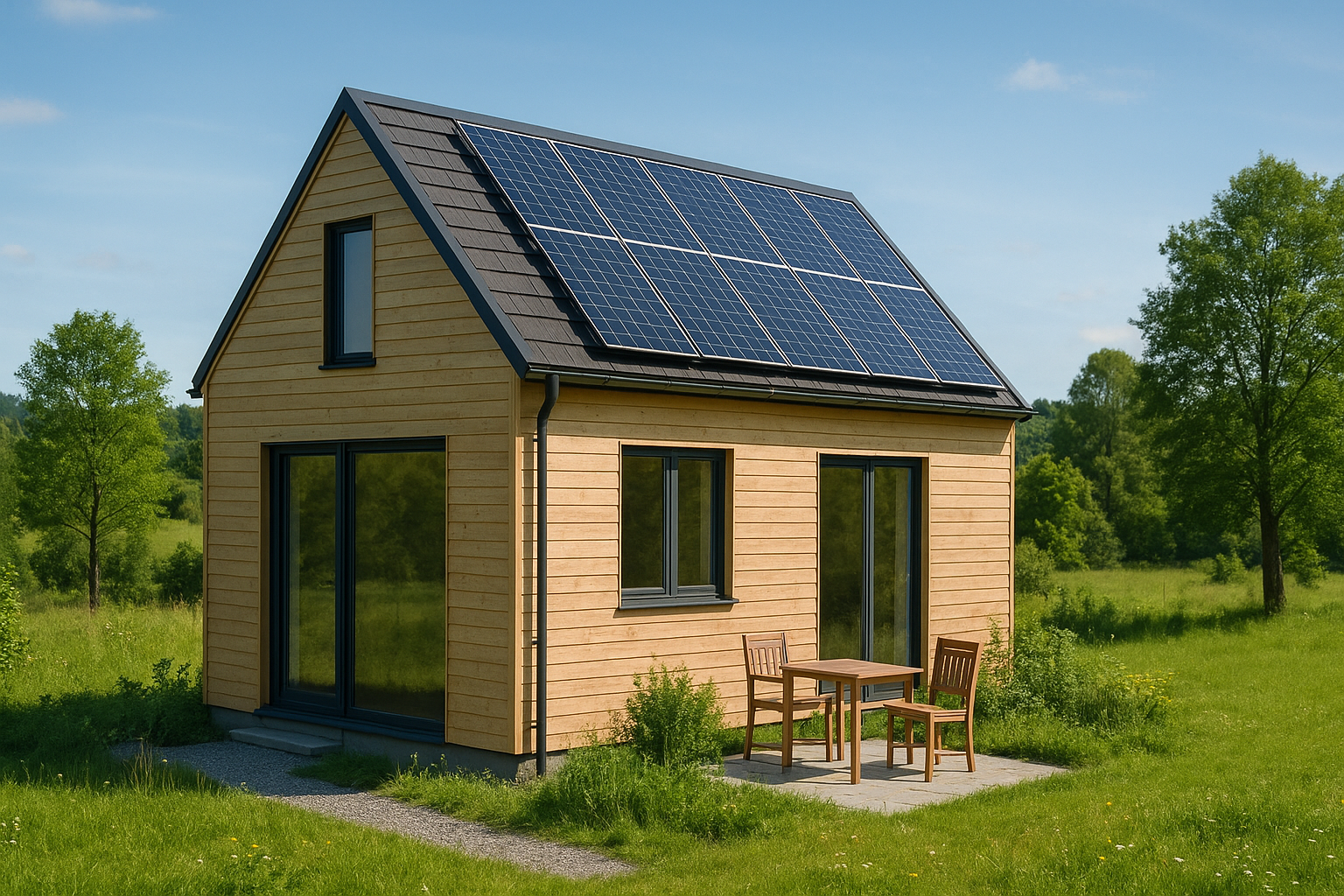
Passive House ADU: Ultimate Guide to Energy Efficient Living in Canada
Estimated reading time: 8 minutes
Key Takeaways
- Energy Efficiency: Passive House ADUs drastically reduce heating and cooling needs.
- Sustainable Living: Incorporates innovative insulation and ventilation systems for year-round comfort.
- Canadian Standards: Designed to comply with national, provincial, and local regulations.
- Green Building: Utilizes eco-friendly materials and design strategies to lower carbon footprints.
- Cost Savings: Lower utility bills and reduced maintenance needs make these ADUs a smart investment.
Table of contents
- What Is a Passive House ADU?
- Core Passive House Principles Explained
- Designing a Sustainable ADU with Passive House Standards
- Achieving Energy Efficiency & Slashing Utility Costs
- Meeting Canadian Building Standards for Passive House ADUs
- Environmental Impact: How Passive House ADUs Help Canada
- Living Well: The Lifestyle Benefits of Your Passive House ADU
- Conclusion: Why Choose a Passive House ADU in Canada?
- Frequently Asked Questions
What Is a Passive House ADU? (Passive House ADU, Energy Efficiency)
A Passive House ADU is a self-contained residential unit—like a backyard suite or laneway house—built to the highest standards of energy efficiency. It features advanced insulation, a tight building envelope, and exceptional air quality systems. This design means the home uses very little energy for heating or cooling, stays comfortable all year round, and promotes outstanding indoor air quality.
Across Canada, more homeowners are choosing Passive House ADUs. The benefits include:
- Substantial reduction in utility bills due to minimized heating and cooling requirements.
- Sustainable, comfortable living that enhances affordability and environmental responsibility.
- Addressing housing shortages by adding quality living spaces on existing properties.
- Increased resilience to energy price spikes and harsh Canadian weather conditions.
Green building is the cornerstone of this trend. Sustainable strategies such as strong insulation and efficient heating align with evolving Passive House Canada guidelines and insights from MLA Canada. For additional sustainable housing ideas, visit Tiny Sustainable Living.
Core Passive House Principles Explained (Passive House, Energy Efficiency)
Passive House design hinges on four main principles, each critical in creating an ultra-efficient living space:
- Airtightness: A well-sealed exterior stops conditioned air from escaping, eliminating drafts and reinforcing thermal stability.
- High Insulation: Continuous, high-quality insulation keeps spaces warm in winter and cool in summer.
- Thermal Bridge-Free Construction: Thoughtful construction avoids weak spots where heat could escape, such as around windows and doors.
- Ventilation with Heat Recovery (HRV/ERV systems): Mechanical systems ensure a constant supply of fresh air while recapturing heat from outgoing air.
Especially for ADUs—with their compact size and reduced wall areas—these principles are essential to cope with Canada’s extreme climates. Learn more about these standards from resources like Passive House Canada: About and Modern ADU Plans.
Designing a Sustainable ADU with Passive House Standards (Sustainable ADU, Green Building)
Key Design Considerations
A sustainable ADU following the Passive House model prioritizes both energy performance and healthy living through smart design decisions.
Building Orientation & Window Placement
- Position main windows to face south or southwest to harness passive solar heating in winter.
- Incorporate overhangs and window shades to prevent overheating during summer.
- Maximize natural daylight while controlling glare and excess heat gain.
Material Selection
- Employ locally sourced wood and stone for reduced environmental impact.
- Opt for non-toxic, low-VOC finishes, adhesives, and paints to ensure healthy indoor air quality.
- Use high-performance materials like triple-pane windows, advanced weather barriers, and FSC-certified timber for insulation.
Sustainable Strategies
- Green Roofs: Provide natural insulation and absorb rainwater. More details can be found on Green Roof Tiny Home.
- Rainwater Harvesting: Collect water for gardens or non-potable uses; see Rainwater Harvesting for Tiny Homes.
- Renewable Energy: Use rooftop solar panels or solar water heaters to enable off-grid potential.
- Smart Mechanical Systems: Incorporate HRVs or ERVs to ensure efficient, low-energy air replacement.
Integrating these strategies ensures that a Passive House ADU is not only comfortable but also built with long-term sustainability in mind. Additional insights are available at Passive House Canada: Benefits.
Achieving Energy Efficiency & Slashing Utility Costs (Energy Efficiency)
Passive House standards can lead to energy savings of up to 80–90% compared to conventional homes. This is achieved through:
- Eliminating air leaks and heat loss with airtight, insulated construction.
- Using mechanical ventilation to deliver fresh air without significant heat loss.
- Minimizing energy demand so that heating may sometimes be supported by small electric heaters or even body heat.
Utility Cost Reduction
- Lower heating bills during harsh Canadian winters thanks to superior insulation.
- Reduced cooling costs in summer due to smart sun protection and ventilation strategies.
- Simplified utility systems that often require smaller, more efficient appliances.
Extra Benefits
- Consistent comfort with no cold spots or sudden temperature changes.
- Superior indoor air quality provided by continuous ventilation systems.
- Reduced outside noise due to robust construction and thick building materials.
Supporting research from MLA Canada and Passive House Canada underscores these benefits. For more on compact energy efficiency, visit Energy Efficiency Tiny Homes.
Meeting Canadian Building Standards for Passive House ADUs (Canadian Standards)
Understanding the Regulations
Building a Passive House ADU in Canada means adhering to strict codes and standards:
- National Building Code of Canada (NBC): Establishes safety, accessibility, and energy efficiency standards.
- Provincial and Municipal Requirements: Local guidelines may introduce additional design or size restrictions.
- Zoning Bylaws: These restrict where and how large an ADU can be built.
Certification and Compliance
- Passive House Certification: Provided by organizations like Passive House Canada to confirm performance and sustainability.
- Certified Professionals: Engaging designers and builders accredited by Passive House ensures that all standards are met.
- Helpful Resources: Discover more at Passive House Canada: About or read up on Canadian ADU Regulations Guide.
Complying with these standards not only ensures safety and resale value but also marks your ADU as a long-term, eco-friendly investment.
Environmental Impact: How Passive House ADUs Help Canada (Passive House, Sustainable ADU, Green Building)
Lowering Carbon Footprints
- Reduced Energy Consumption: Less energy is required for heating, cooling, and daily living.
- Significant Emission Cuts: Greenhouse gas emissions can be reduced by up to 90% compared to traditional ADUs.
- Sustainable Materials: Emphasis on recycled and renewable supplies further lessens environmental impact.
Supporting Sustainable Cities
- Increasing urban density by creating more homes within existing properties.
- Optimizing resource use while mitigating urban sprawl.
- Contributing to provincial and national climate goals, potentially unlocking rebates and incentives.
For a deeper dive into sustainability benefits, visit Passive House Canada: Benefits and explore Tiny Sustainable Living.
Living Well: The Lifestyle Benefits of Your Passive House ADU (Passive House ADU, Energy Efficiency)
Everyday Comfort
- Stable Temperatures: Maintain a consistent, comfortable heat with no cold zones.
- Draft-Free Living: Airtight construction ensures no unwanted chills or heat escapes.
- Quiet Privacy: Thick materials and sealed structures block external noise.
Healthier Air Quality
- Continuous Fresh Air: High-efficiency HRV/ERV systems replace stale air without sacrificing warmth.
- Reduced Allergens: Consistent filtration minimizes dust, pollen, and moisture buildup.
Low Maintenance
- Built for longevity with fewer repairs due to quality materials and design.
- Intelligent systems reduce the need for constant management of heating and ventilation.
Real-world testimonials from homeowners—featured on sites like MLA Canada and Passive House Canada—highlight dramatic cost savings and enhanced indoor living quality.
Conclusion: Why Choose a Passive House ADU in Canada? (Passive House ADU, Energy Efficiency, Canadian Standards, Green Building)
Designing and building a Passive House ADU establishes a new benchmark for sustainable and energy-efficient living in Canada.
- Unmatched Energy Efficiency: Lower utility bills and year-round comfort regardless of the weather.
- Compliance with Canadian Standards: Guarantees safety, approval, and high resale value.
- Green Building Practices: Reduces your environmental impact while ensuring optimal indoor air quality and comfort.
- Health and Lifestyle Upgrade: Experience quieter, healthier living with consistent temperatures and lower maintenance.
For expert advice, consult a Passive House professional or visit Passive House Canada. Additional resources on related topics include Accessory Dwelling Units: The Ultimate Guide and Canadian ADU Regulations Guide.
Frequently Asked Questions
What exactly is a Passive House ADU?
A Passive House ADU is a compact, energy-efficient living space built with enhanced insulation, airtight construction, and advanced ventilation systems. It minimizes energy consumption while maximizing comfort, making it ideal for Canadian climates.
Will a Passive House ADU really reduce my utility bills?
Yes. The advanced design and insulation significantly lower heating and cooling needs, leading to a marked reduction in utility bills, even during extreme temperatures.
How does a Passive House ADU comply with Canadian building standards?
These ADUs are designed following the National Building Code of Canada, along with local provincial and municipal guidelines, ensuring that every unit meets strict energy efficiency and safety standards.
Are there extra benefits beyond energy savings?
Absolutely. In addition to substantial cost savings, Passive House ADUs offer superior indoor air quality, noise reduction, and long-term durability, contributing to a healthier and more sustainable lifestyle.

Leave a Reply